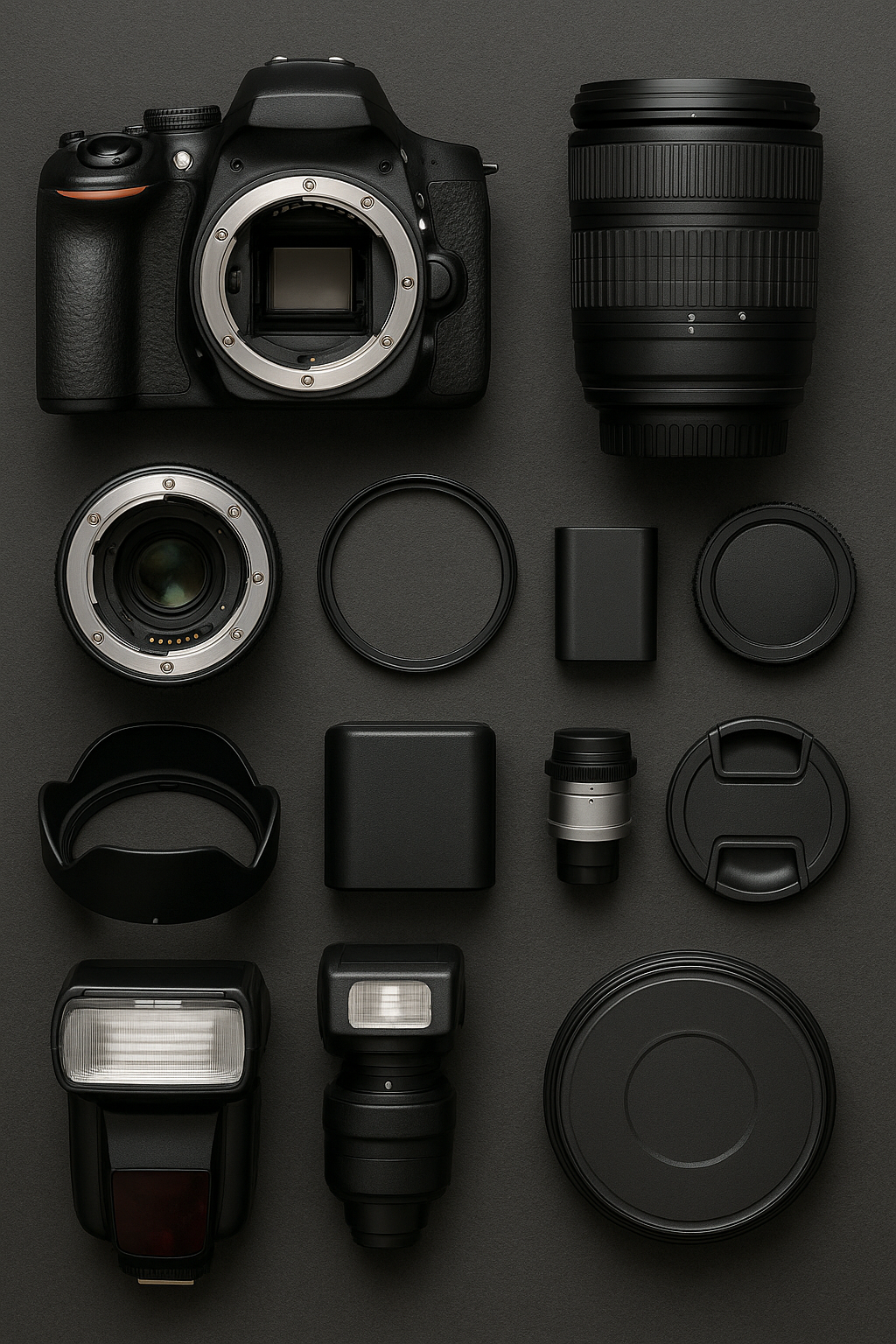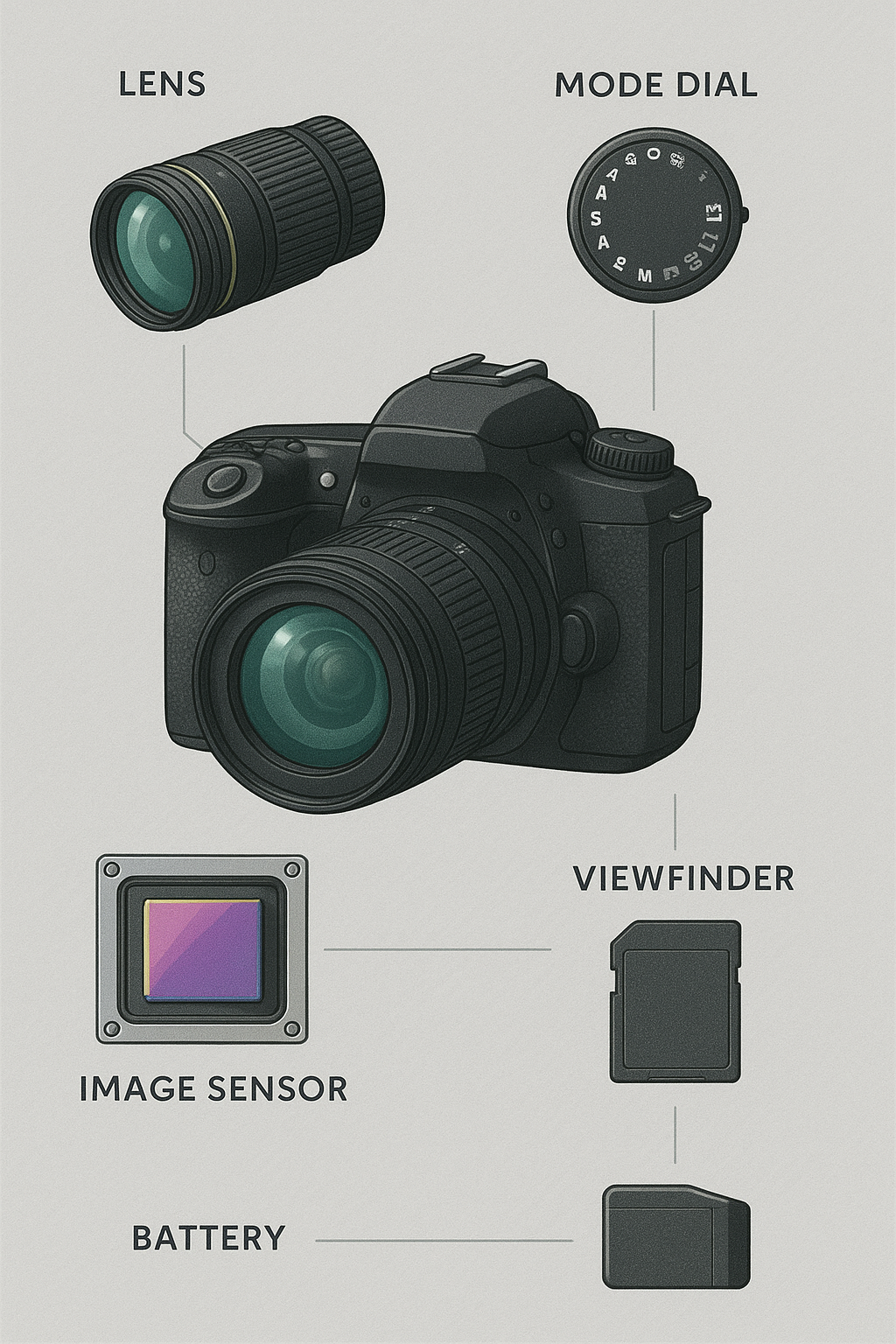Customs Clearance of Camera Types, Parts and Components in Iran (HS Code + Documents & Permits)

For estimating the time and cost of clearing cameras (parts & components), contact the Saba Tarkhis experts.
Instant Free Consultation1) Types of Cameras under HS Code 9006
DSLR Cameras (Digital Single-Lens Reflex) - Tariff Code 900651:
Mirrorless Cameras - Tariff Code 900652:
Compact (Point-and-Shoot) Cameras - Tariff Code 900653:
Action Cameras - Tariff Code 900654:
Instant Cameras - Tariff Code 900655:
2) Key Points in the Camera Clearance Process
Compliance with legal requirements and national standards
National and international standards: Importers must ensure imported cameras comply with relevant national and international standards. Some cameras, especially those with connectivity features (such as Wi-Fi or Bluetooth), may require specific approvals from the Communications Regulatory Authority.
Comprehensive Trade System: Order registration via the Comprehensive Trade System is mandatory for importing these cameras. Importers must accurately enter details such as model, brand, country of manufacture, and technical specifications. Any deficiency can cause clearance delays.
Customs tariff: HS code 9006 includes subheadings with different duty rates depending on camera type. Typically, duty rates range between 5% and 10%, but may vary based on the country of origin and camera type.
Matching documents with goods: During clearance, customs officials match the technical specifications of the cameras with the submitted documents. Any discrepancy or deficiency can delay or even block clearance.
3) Conditions for Importing & Exporting Cameras
4) Key Points in the Camera Clearance Process (Detailed)
1. Compliance with legal requirements and national standards
2. Order registration and documentation
3. Valuation and calculation of import duties
HS code 9006, defined for cameras, is one of the most important factors in determining import duties and customs costs. The duty under this code is typically between 5% and 10% of the goods’ value, but several factors can affect the final rate: Camera type: different cameras under this code may have different duty rates. For example, professional DSLRs and mirrorless models may carry higher rates than compact or action cameras.
Country of origin: the manufacturing country can influence the rate. Some countries may benefit from preferential tariffs due to specific trade agreements with Iran. Quantity and value: import duties are calculated based on quantity and total consignment value. Importers must carefully prepare and submit commercial invoices and related documents to avoid issues in customs calculations.
4. Review and matching of technical specifications
A crucial step in clearing cameras is precisely matching the goods’ technical specifications with the documents submitted to customs. This is especially critical for cameras with advanced features:
Physical inspection: in some cases, customs may require a physical inspection to verify that the technical specifications match the documents. Inspections can include checking on-device specs, packaging type and count, and even functional tests.
Document consistency: all information across documents must be consistent. Any discrepancy may cause delays, financial penalties, or even prevention of clearance.
Resolving discrepancies: if any discrepancy arises, the importer must promptly resolve it—submitting corrected documents, paying additional duties, or obtaining new permits as needed.
5) Documents Required for Clearing Camera Types
1. Commercial Invoice
2. Bill of Lading
3. Packing List
4. Certificate of Origin
5. Permits related to communications equipment
6. Inspection Certificate
7. Order registration in the Comprehensive Trade System
8. Proforma Invoice
9. Certificate of Conformity
10. Import Permit
| Goods/Subgroup | Short description | HS Code |
|---|---|---|
| DSLR camera | Professional, mirrored, interchangeable lens | 900651 |
| Mirrorless camera | No mirror, EVF/display, interchangeable lens | 900652 |
| Compact camera | Small, fixed lens, user-friendly | 900653 |
| Action camera | Water/shock-resistant, sports, mountable | 900654 |
| Instant camera | Instant print, small formats | 900655 |
Exact classification depends on features, connectivity capabilities, accessories, packaging, and end use.
Need precise HS code determination, communications/standard approvals, and document preparation? Our team manages the file end-to-end.
Submit a Proforma Request
Frequently Asked Questions
What are the HS codes for cameras?
Heading 9006 and subheadings: 900651 (DSLR), 900652 (mirrorless), 900653 (compact), 900654 (action), 900655 (instant). Final determination depends on technical specs.
What approval is needed for cameras with Wi-Fi/Bluetooth?
Approval from the Communications Regulatory Authority for communications equipment and compliance with national standards is mandatory.
What are the customs duties on cameras?
Typically within the range stated in the text (5–10%), depending on camera type, country of origin, and documentation; exact rates are based on HS subheading and current circulars.
What documents are required for clearance?
Commercial invoice, bill of lading, packing list, certificate of origin, communications permits, inspection certificate, order registration, proforma, certificate of conformity, and if necessary an import permit.
Special Services Provided by Saba Brokerage
Pre-import expert consulting: our experts analyze the market and your needs to propose the best import solutions. This includes correct HS selection, review of regulations and legal requirements, and cost calculation—so you can enter the import process with confidence.
Handling all order-registration steps: our experienced team completes every stage of your order registration in the Comprehensive Trade System precisely and lawfully—managing the process end-to-end to prevent any deficiency or delay.
Expediting customs procedures: leveraging an extensive network and deep clearance experience, we complete your camera clearance in the shortest possible time—reducing costs and accelerating time-to-market.
Continuous follow-up and issue resolution: we continuously track your clearance status. If any issue or discrepancy arises, we act swiftly to resolve it and prevent delays so your goods clear without problems.
Post-clearance services: beyond clearance, we offer domestic transport and delivery to the final destination. These integrated services relieve you of post-clearance concerns and ensure goods arrive on time and without issues.
Contact our experts for more information.
.png)
